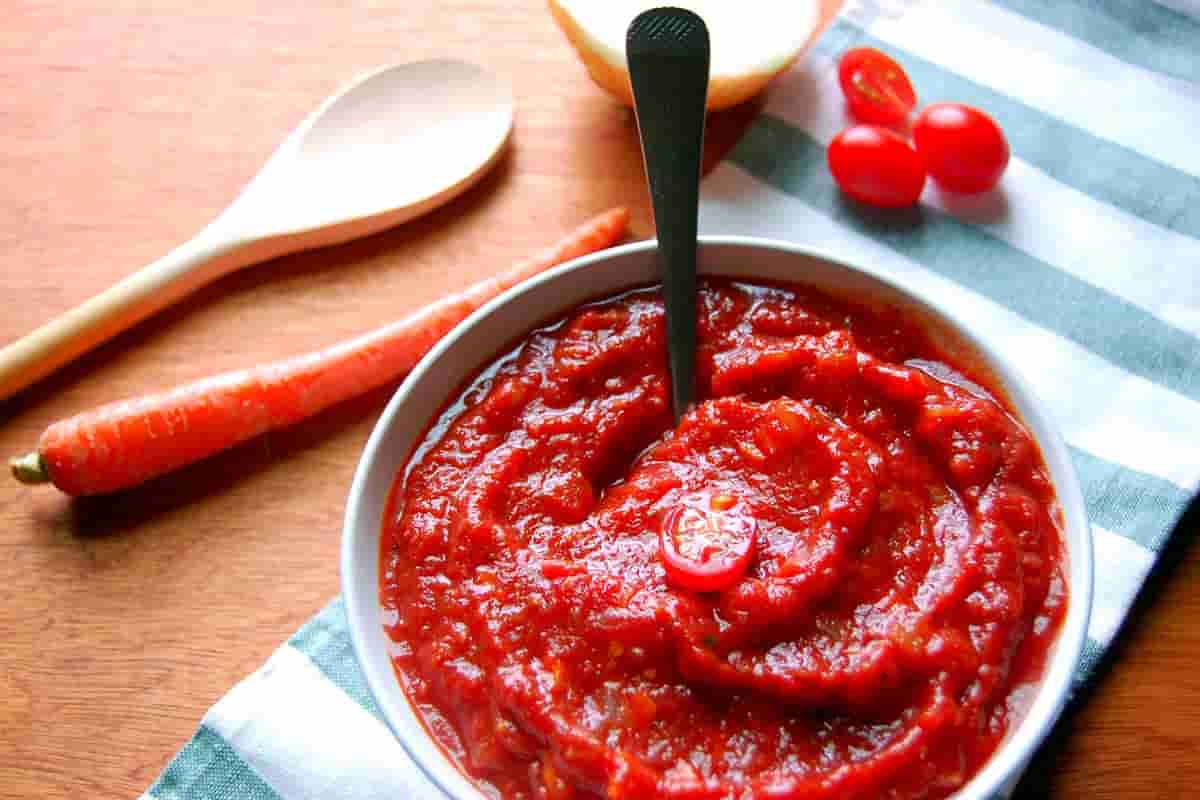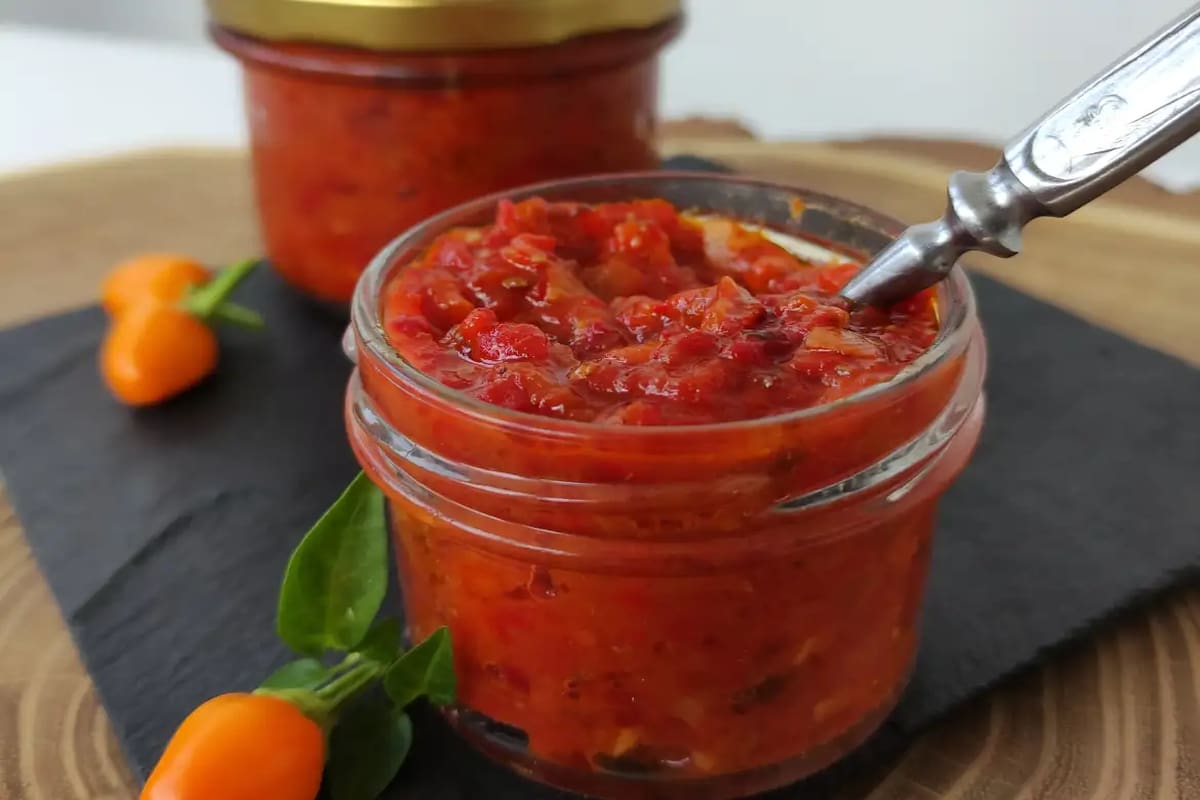In this article, we are going to talk about the history and origin of tomato paste and how it was found and started to be commonly used, how it is being produced these days commercially, the production process, the packaging, and all the material used and also the composition of the tomato paste and what it is made of.
Tomato paste has been around for hundreds of years and is a permanent part of every kitchen, adding a very strong and delicious flavor to almost every recipe, whether it is added into the recipe on its own or it has first turned into another tomato based product like tomato sauce, tomato puree, pasta sauce, etc.
Even though tomato paste is being produced and supplied commercially today and is available in every big mall or small local shop, that doesn’t stop chefs or housewives from making their own tomato paste in the kitchen, and even sometimes laying the mashed tomatoes under the hot sun the old fashioned way instead of boiling them and baking them in the oven.
And the difference between this kind of tomato paste and the commercially produced one would be noticed in the recipe that these pastes have been used in, but as you have already guessed the taste and the flavor of the homemade tomato paste will be far better than the commercial one.
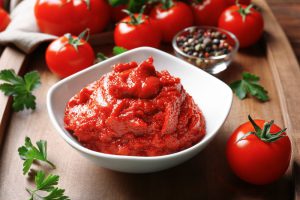
production and packaging of tomato paste
Tomato paste has been a permanent part of almost every kitchen since it can add a very strong and very tasty flavor to all kinds of dishes. This powerful flavoring agent is made by skinning and seeding the tomatoes and then boiling them to reduce the water content until a thick paste has been left of the tomatoes, some salt, and other spices or herbs may be added to the tomatoes during the processing procedure to either prolong the shelf life of the finished product or to just add a bit of extra flavor to the tomato paste.
This process can be done both in a kitchen inside the house or it can be done on a very larger scale and in an industrial factory. Ever since tomato paste was born in the kitchens in Italy, all kinds of jars and containers have been used to store this delicious product. By industrializing the process of making tomato paste, the need for a better container that would be economic for the manufacturer and convenient for the consumers was born and the manufacturers have been trying ever since to find a better and more suitable packaging system that will be more economic and also more close to the consumer’s likings.
Nowadays a few packaging systems are incorporated by the manufacturers worldwide such as steel tapered drums for providing the tomato paste in large quantities and metallic cans, glass jars, and squeeze tubes of different shapes and sizes to suit the needs of every customer. Industrial factories making tomato paste may also provide the aseptic packaging of the tomato paste in which the paste after being heated in an airtight evaporator is transferred directly into the containers without having any contact with open air. This process makes it possible to store the aseptically packaged tomato paste up to two years.
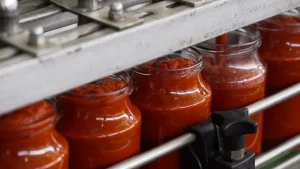
How is tomato paste made commercially
The two varieties of tomato paste—Hot Break and Cold Break—are utilized to produce various finished goods. The fresh tomatoes must be heated quickly after being chopped to a high temperature (between 85 and 100°C) in order to make Hot Break (HB) paste. Fresh, sliced tomatoes must be cooked at a lower temperature (between 65 and 75°C) when using Cold Break (CB) paste. While CB paste is being used for triple concentration paste and requires a Brix of 36–38, HB paste is typically used for ketchup and different varieties of tomato sauce that require a Brix of 28–30.
Then the pulp, which consists of fiber, juice, skin, and seeds, is then forced through a removal unit composed of a pulper and a refiner, two huge sieves. These sieves enable the pulp to become either coarser or smoother, depending on the needs of the consumer. 95 percent of the pulp typically passes through both sieves. The remaining 5%, which consists of fiber, seeds, and skin, is regarded as trash and is sent from the facility to be sold as animal feed.
The improved juice is gathered in a huge holding tank, which continuously supplies the evaporator with food. The stage that requires the greatest energy in the production of tomato paste is evaporation. The water is drained from the juice, which is still only 5% solid, at this point, turning the juice into tomato paste that is 28–36% concentrated. The operator simply needs to set the Brix value on the control panel for the desired amount of concentration since the evaporator automatically controls juice intake and final concentrate output.
Finally, the tomato paste is packaged either aseptically or normally in steel tapered drums, metallic cans, glass jars, or squeeze tubes to be transferred to the market.
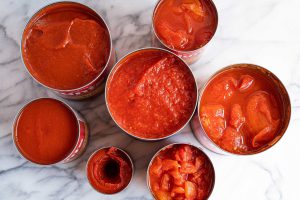
Tomato paste review
Tomato paste is basically concentrated tomato sauce. You may make tomato paste by cooking down tomatoes, removing the skin and seeds from the mixture, and then cooking the sauce until it thickens. Stabilizers such citric acid, salt (there are also no-salt-added variants), and occasionally herbs and spices are added to manufactured tomato pastes. Additionally, there are varieties of tomato paste that are triple- and double-concentrated, making them even more strong.
The advantage of using tomato paste over other canned tomatoes is that you will get the rich tomato flavor without all the excess water, making it excellent for meals where you don’t want a lot of moisture, like meatloaf or taco filling. Tomato paste may offer a rapid flavor boost to 30-minute weeknight meals or be used to gradually increase flavor in slow-cooked dishes.
Plan to add your tomato paste early in the cooking process before adding liquids like water, broth, or other canned tomatoes if you want to get the most flavor out of it. The tomatoes have a chance to further mature and caramelize in this manner. Tomato paste originated in Italian kitchens, but as knowledge of its flavorful and potent taste spread, it quickly began to be made in homes throughout other Mediterranean nations. Tomato paste used to be made using a variety of quite varied recipes, but nowadays it is virtually solely created professionally.
One of the most significant and well-liked vegetables in Europe, tomatoes make up 19% of the fresh vegetable market. Since 2011–2012, the tomato paste market has not had significant growth; before that, it had an annual growth rate of about 6%. However, despite the market’s volatility, there was an increase of 1.6% over the previous year, which is noteworthy.
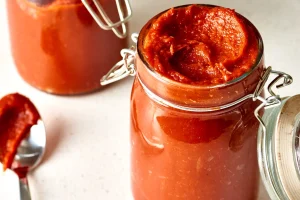
Tomato paste origin
Originally from Western South America, the tomato. At first, the wild tomatoes were little and golden. The Aztecs and Mesoamericans both utilized tomatoes in their food, however, it is unknown when they were initially cultivated. Native Americans in Pueblo thought that eating tomato seeds granted them supernatural abilities (like the power of acid reflux).
It was being grown in Southern Mexico by 500 BCE. The tomato’s secret was kept in South America for many years, but Hernan Cortes, a Spanish conquistador, brought the first tomato to Europe in 1521 after capturing Tenochtitlan, which is now Mexico City. However, there is a legend that Christopher Columbus brought tomatoes back to Europe as early as 1493. The tomato was introduced to the other Spanish possessions after South America was colonized, including the Philippines, from where it spread across Asia.
The cultivation of the tomato began in 1540 because it thrived in the Mediterranean environment. When tomatoes first arrived in Italy in 1548, they were farmed mostly as ornamentals. In spite of the fact that they were initially grown in England in 1590, physician John Gerard reported that they were toxic and unfit for ingestion.
This meant that for several years, not many tomatoes were consumed in Britain and her colonies. Tomato paste originated in Italian kitchens, but as knowledge of its flavorful and potent taste spread, it quickly began to be made in homes throughout other Mediterranean nations. Tomato paste used to be made using a variety of quite varied recipes, but nowadays it is virtually solely created professionally.
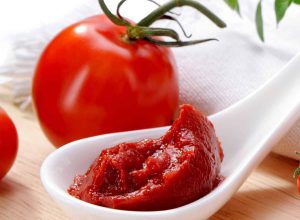
Tomato paste composition
The mass fraction of dry matter is a measure of the paste’s quality. Tomato paste typically doesn’t need to have any extra ingredients (flavors, colors, starch), as it already has all the necessary ingredients, along with a tiny quantity of salt and sugar. Starch, mono- and disaccharides, organic acids, and dietary fiber are all components of this product. There is a substantial quantity of vitamin A in the paste (300 mcg). Vitamins PP, E, C, and B1 and B2 are also present.
Because tomato paste contains high amounts of potassium (875 mg), phosphorus (68 mg), and magnesium, it has a number of health benefits (50 mg). The paste also includes calcium, sodium, and iron. Tomato paste has a calorie value of 100 kcal per 100 grams. The food has 19 g of carbs and 4.8 g of protein per 100 grams. Tomato paste qualifies as a dietary product due to its low calorie count. Additionally, a tomato-based diet is advised for people with thrombotic tendencies and vascular illnesses.
In addition, pasta is advised for gout and rheumatism. Scientists have found that cooked or baked veggies had the highest content of the beneficial natural antioxidant lycopene than raw tomatoes. About ten times more of this important natural ingredient exists in tomato paste than in raw tomatoes.
It has been established that heat treatment greatly improves the absorption of the antioxidant lycopene, which shields the body’s cells from the damaging effects of the environment and from early aging. As a result, tomato paste has many more beneficial qualities than fresh tomatoes.
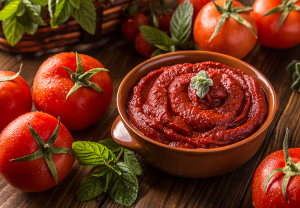
Dangers of tomato paste
Regarding tomato paste risks, it is important to keep in mind that a natural, high-quality product is essentially unable to harm a person’s health. When tomato paste is made with the addition of water, starch, stabilizers, and preservatives, it might cause injury if low-cost raw ingredients were utilized in its production. When you have cholelithiasis, gastritis, a stomach ulcer, or elevated gastric acidity, you should use the paste with caution. Pasta consumption in excess can raise stomach acidity and cause discomfort.
The usage of tomato paste comes with potential health risks. The packaging is primarily to blame for this. Because of the packaging that tomato paste is supplied in, some people have come to refer to it as “Tin tomato.” Few manufacturers provide their products in sachets. Using tomato paste is about equivalent to purchasing fresh tomatoes and producing your own pastes.
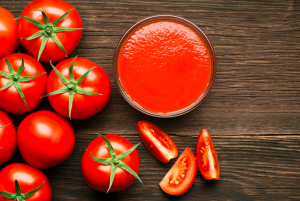
However, they alter in composition when they are put into tins and cans. The linings of cans and the majority of plastic objects are coated with the hazardous chemical Bisphenol-A, which is the reason for this. This substance has the potential to contaminate food and endanger your health.



